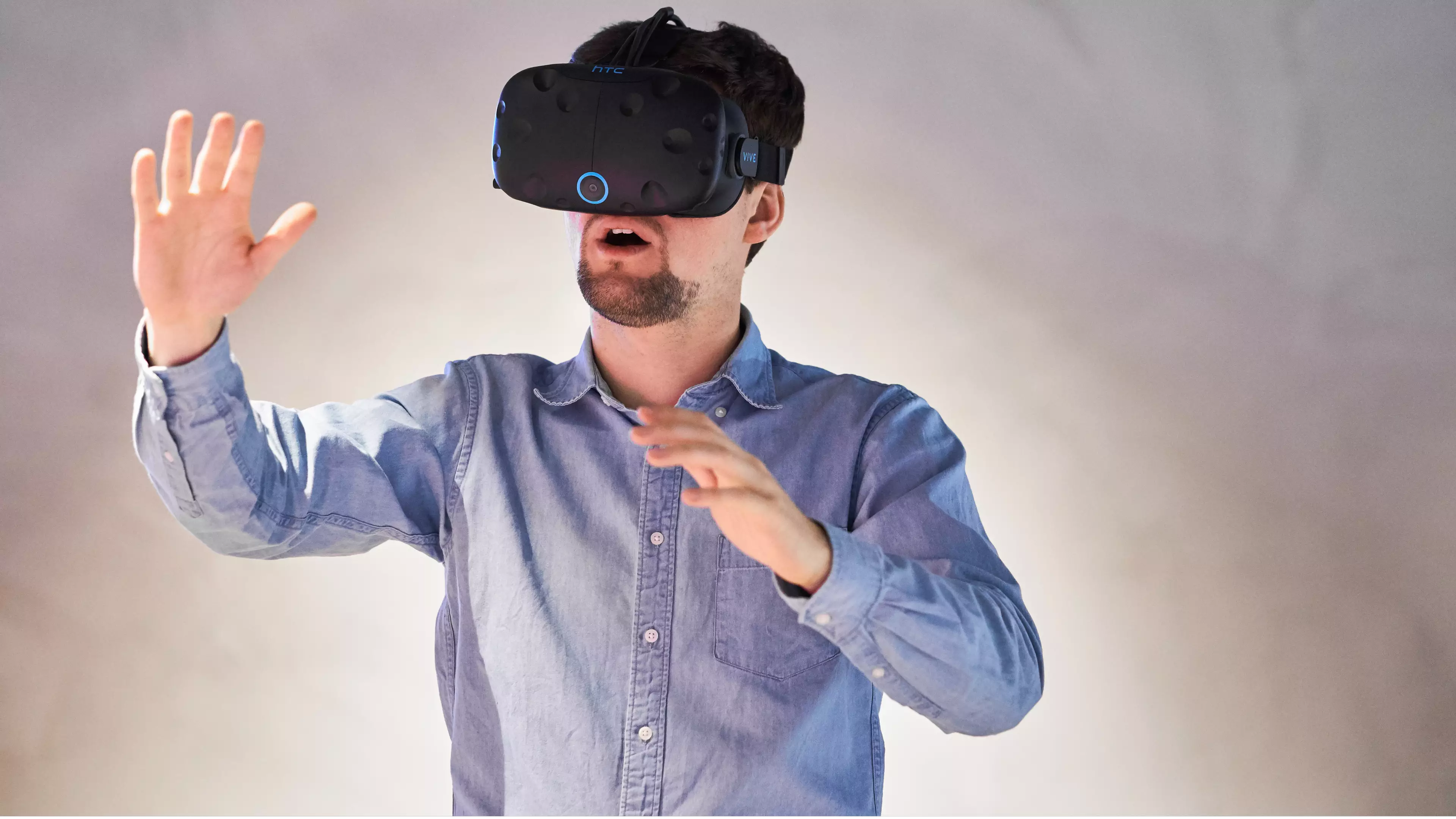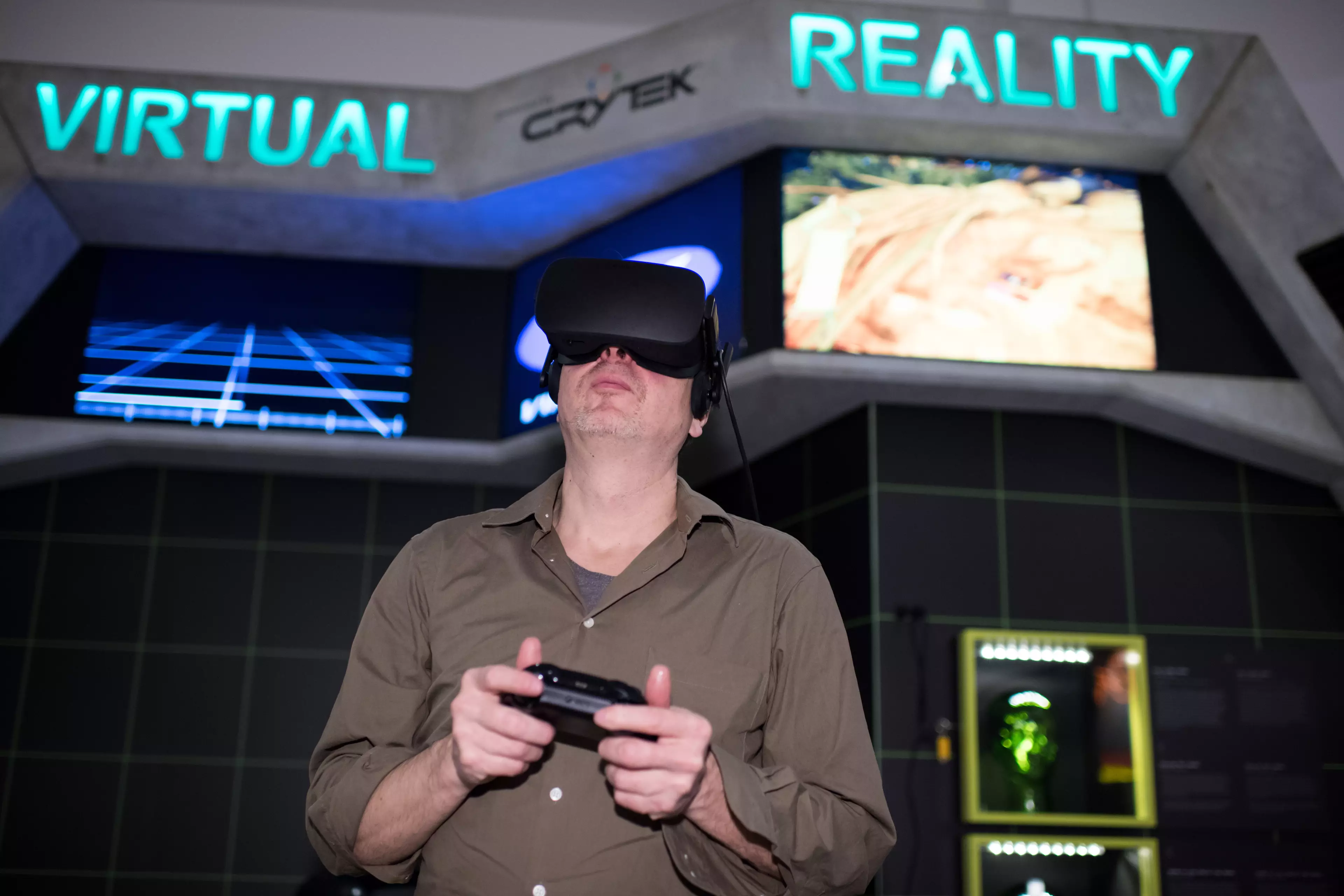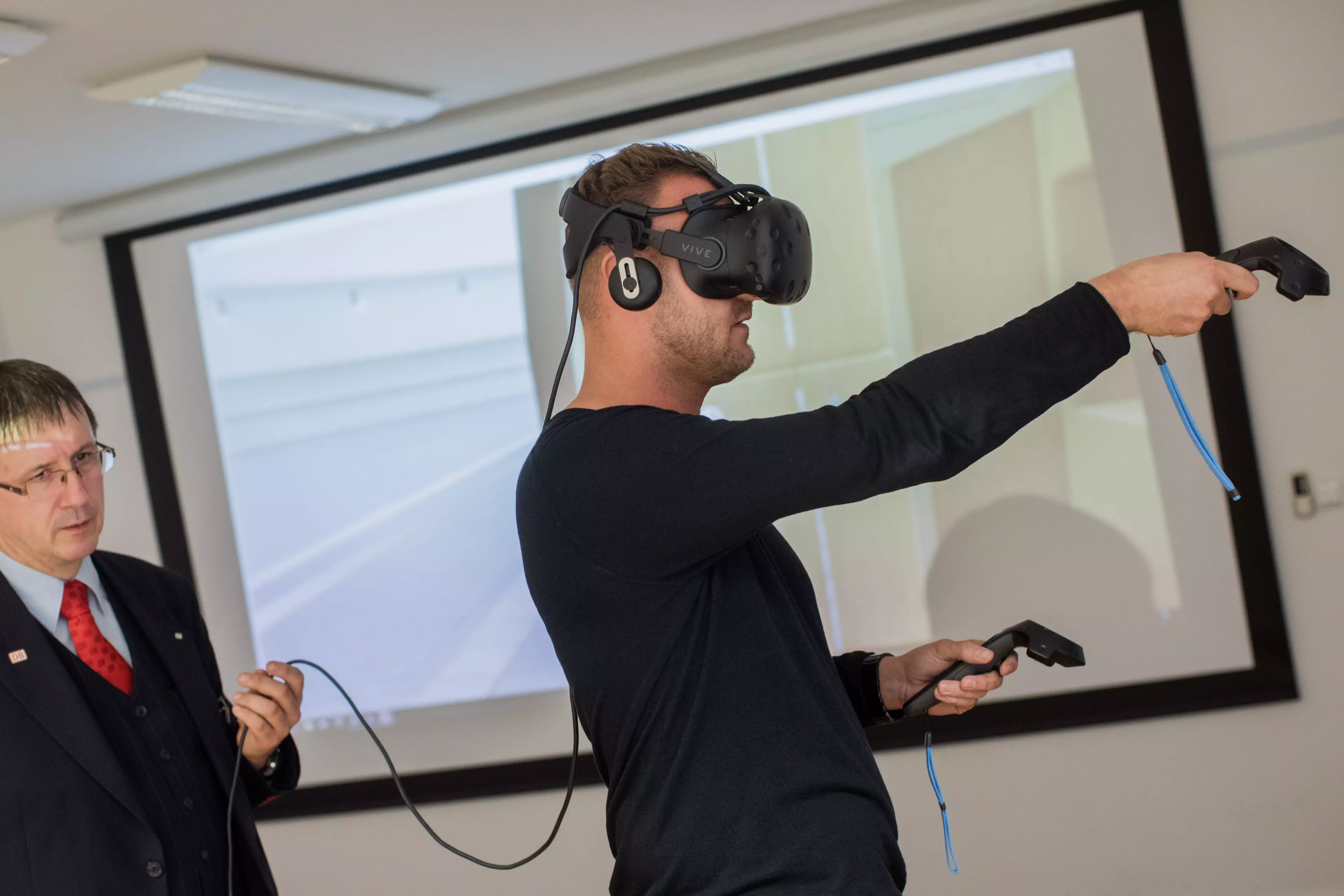
According to research we're one step closer to touching the things 'in front' of us while dabbling in the technology of virtual reality (VR):
The team behind the research have developed a new understanding of how we perceive the sensation of touch, which could have brought us closer to VR in the form of sight, hearing and touch.
Advert
The brains at the University of Birmingham looked into Rayleigh waves - i.e. energy that passes over the surface of objects when they're hit - which led them to create the first scaling law for touch sensitivity.
Still with me? Good.
These findings are already being used to develop VR in the hopes of incorporating the sense of touch.
The researchers found that Rayleigh waves can travel through layers of skin and bone and be picked up by the body's touch receptor cells.

The research was led by Dr Tom Montenegro-Johnson of the University of Birmingham's School of Mathematics, who said: "Touch is a primordial sense, as important to our ancient ancestors as it is to modern day mammals, but it's also one of the most complex and therefore least understood.
Advert
"While we have universal laws to explain sight and hearing, for example, this is the first time that we've been able to explain touch in this way."
James Andrews, co-author of the study at the University of Birmingham, added: "The principles we've defined enable us to better understand the different experiences of touch among a wide range of species.
"For example, if you indent the skin of a rhinoceros by 5mm, they would have the same sensation as a human with a similar indentation - it's just that the forces required to produce the indentation would be different.
"This makes a lot of sense in evolutionary terms, since it's connected to relative danger and potential damage."

While we're on the subject of technology adapting, Facebook's tech wing Oculus is making a VR headset that you can control with your brain.
Advert
The company also plans to replace the current Touch controllers with a neural input device.
In news that might not surprise anyone following the relentless march of progress, Facebook announced in September 2019 that it had acquired CRTL-Labs, the startup that's been working on the neural input.
"They're the team working on neural interfaces," Facebook founder and Oculus owner Mark Zuckerberg clarified on stage at the Oculus Connects 6 conference.
The boffins at CTRL-Labs are making a wristband that 'picks up electrical impulses and turns them into digital inputs you can use in virtual reality' and 'will give the sensation of being able to interact with digital objects'.
Advert
Blimey, the things they can do nowadays, eh?
Featured Image Credit: PATopics: virtual reality, technology news, Technology